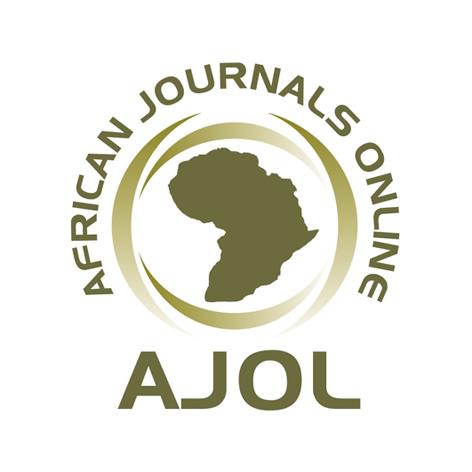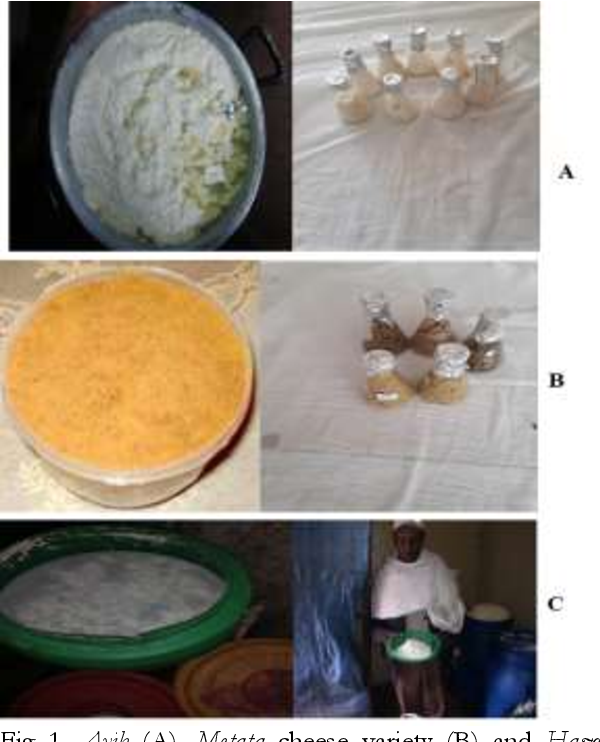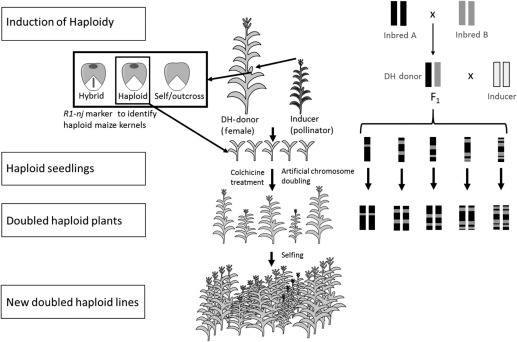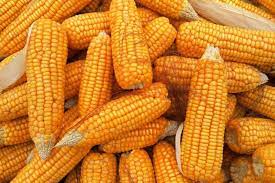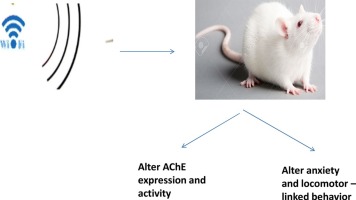Agronomic, Yield, and Fiber Quality Performance of Improved Cotton Varieties under Irrigated Conditions of Weyto and Sille Cotton Growing Areas of Ethiopia
Downloads
A number of cotton varieties are presently available in Ethiopia, all of which differ in adaptability, yield potential, and agronomic characteristics. It is important that producers should be aware of both the superior and poor characteristics of each variety to produce the most suitable ones. The aim of this study was to evaluate the agronomic, yield, and fiber quality performances of improved cotton varieties under irrigation conditions in cotton producing farms in Weyto and Sille areas of Ethiopia. The combined analysis of variance revealed significant (P ≤ 0.01) differences among the varieties for plant height, boll number per plant, boll weight, seed cotton yield, ginning out-turn, lint yield, micronaire, fiber length, and fiber strength. There was no significant interaction effect of variety by location (V*L) and variety by environment (V*Y*L) for economically most important traits (seed cotton yield, lint yield, fiber length, and fiber strength). The highest seed cotton yield (4.35 t ha–1) was recorded for Deltapine-90 cotton variety. The lint yields obtained from the cotton varieties ranged between 1.02 t ha–1 and 1.70 t ha–1. It is concluded that Weyto is more suitable for cotton production than Sille since all varieties showed better performances for economically important traits at this location. This implies that future cotton research should focus on developing varieties having diverse genetic bases, high yielding potential and fiber quality merits to enhance cotton productivity and meet the demand of manufacturing industries in the country.
Abdellatif, K., Khidr, Y., El-Mansy, Y., Lawendey, M. and Soliman, Y. 2012. Molecular diversity of Egyptian cotton (Gossypium barbadense L.) and its relation to varietal development. Journal of Crop Science and Biotechnology, 15(2): 93–99.
Ahmad, A., Ali, R., Zamir, S. and Mahmood, N. 2009. Growth, yield and quality performance of cotton cultivar BH-160 (Gossypium hirsutum L.) as influenced by different plant spacing. The Journal of Animal & Plant Sciences, 19(4): 189–192.
Alebel Bayrau, Firew Bekele, Berihu Assefa and Mezgebe Mihiretu. 2014. An institutional assessment of the cotton and sugarcane commodities in Ethiopia: The climate change perspective. Ethiopian Development Research Institute, Research Report 17. Addis Ababa, Ethiopia. Available at http://www.edri.org.et.
Alehegn Workie, Hussien Mohammed and Berhanu Amsalu. 2020. Genetic variability and heritability studies of seed cotton yield and fiber quality in F5 segregating generation of upland cotton (Gossypium hirsutum L.) in Ethiopia. African Journal of Plant Breeding, 7(3): 001–011.
Ali, B., Iqbal, M., Shah, K., Shabbir, G. and Cheema, N. 2011. Genetic analysis for various traits in Gossypium hirsutum L. Pakistan Journal of Agricultural Research, 24(1–4): 8–13.
Anonymous, 2018. The classification of cotton. America’s cotton producers and importers ©2018 Cotton Incorporated. https://www.cottoninc.com/wp-content/uploads/2017/02/Classification-of-Cotton.pdf. Accessed on April 19, 2023.
Bakhsh, A., Rehman, M., Salman, S. and Ullah, R. 2019. Evaluation of cotton genotypes for seed cotton yield and fiber quality traits under water stress and non-stress conditions. Sarhad Journal of Agriculture, 35(1): 161–170. http://dx.doi.org/10.17582/journal.sja/2019/35.1.161.170.
Bedane Gudeta, Alehegn Workie, Ermias Shonga E, Arkebe Gebregziabher, Deste Gebre, et al. 2017. Cotton research in Ethiopia: Achievements, challenges, opportunities and prospects. Pp. 61–80. In: Dawit Alemu, Eshetu Derso, Getnet Assefa and Abebe Kirub (eds), Agricultural Research for Ethiopian Renaissance: Challenges, Opportunities and Directions.
Bedane Gudeta, Samuel Damtew, Arkebe Gebregziabher, Donis Gurmessa, Merdasa Balcha, et al. 2019. Evaluation of yield and fiber qualities performance of long-staple cotton (Gossypium barbadense L.) genotypes tested on multi-locations of potential cotton-growing areas of Ethiopia under irrigation conditions. Proceedings of the National Conference on Crop Improvement and Management Research, 10–12 October, Addis Ababa, Ethiopia. Pp. 79–89.
Chee, P., Draye, X., Jiang, C., Decanini, L., Delmonte, T., et al. 2005a. Molecular dissection of interspecific variation between Gossypium hirsutum and Gossypium barbadense (cotton) by a backcross-self approach: I. Fiber elongation. Theoretical and Applied Genetics, 111: 757–763.
Chee, P., Draye, X., Jiang, C., Decanini, L., Delmonte, T., et al. 2005b. Molecular dissection of interspecific variation between Gossypium hirsutum and Gossypium barbadense (cotton) by a backcross-self approach: III. Fiber length. Theoretical and Applied Genetics, 111: 772–781.
Constable, G., Llewellyn, D., Walford, S.A. and Clement, J.D. 2015. Cotton breeding for fiber quality improvement. In: Cruz, V.M.V., Dierig, D.A. (eds), Industrial Crops. Handbook of Plant Breeding, volume 9. Springer, New York, NY. https://doi.org/10.1007/978-1-4939-1447-0_10.
Copur, O. 2006. Determination of yield and yield components of some cotton cultivars in semi-arid conditions. Pakistan Journal of Biological Sciences, 9(14): 2572–2578.
Donis Gurmessa, Samuel Damtew, Merdasa Balcha and Arkebe Gebregziabher. 2022a. Character association study and path analysis for fiber yield and its attributes in improved Ethiopian cotton (Gossypium hirsutum L.) varieties. Ethiopian Journal of Agricultural Science, 32(2): 119–132.
Donis Gurmessa, Arkebe Gebregziabher, Zerihun Desalegn and Ridwan Mohammed. 2022b. Agronomic, yield and fiber quality performance of released introduced hybrid cotton varieties in irrigated agro ecologies of Ethiopia. International Journal of Genetics and Genomics, 10(2): 53–58.
Donis Gurmessa, Merdasa Balcha, Samuel Damtew, Arkebe Gebregziabher, Bedane Gudeta and Alehegn Workie. 2022c. Yield and fiber quality performance of hybrid cotton varieties under potential production irrigated areas of Ethiopia. International Journal of Applied Agricultural Sciences, 8(4): 174–177.
Donis Gurmessa. 2019. Genetic diversity study of improved cotton (G. hirsutum L.) varieties in Ethiopia using simple sequence repeats markers. Academic Research Journal of Biotechnology, 7(2): 6–14.
Ehsan, F., Ali, A., Nadeem, M., Tahir, M. and Majeed, A. 2008. Comparative yield performance of new cultivars of cotton (Gossypium hirsutum L.). Pakistan Journal of Life and Social Sciences, 6(1): 1–3. Fang, D.D., Jenkins, J.N., Deng, D.D., McCarty, J.C., Li, P. and Wu, J. 2014. Quantitative trait loci analysis of fiber quality traits using a random-mated recombinant inbred population in Upland cotton (Gossypium hirsutum L.). BMC genomics, 15(1): 1–15.
Freeland, J., Pettigrew, T., Thaxton, B. and Andrews, G. 2006. Agro meteorology and cotton production: Guide to agricultural meteorological practices. https://old.wmo.int/extranet/pages/prog/wcp/agm/gamp/documents/WMO_No134_en.pdf. Accessed on 30 August 2023.
Gormus, O. and Yucel, C. 2002. Different planting date and potassium fertility effects on cotton yield and fiber properties in the Çukurova region, Turkey. Field Crops Research, 78(2–3): 141–149. https://doi.org/10.1016/S0378-4290(02)00121-1.
Guzman, M., Vilain, L. and Rondon, T. 2018. Increasing genetic diversity of cotton breeding programs in Venezuela. Turkish Journal of Field Crops, 23(2): 151–158. https://doi.org/10.17557/tjfc.484975.
Hussain, M., Ahmad, A. and Zamir, S. 2007. Evaluation of agro-qualitative characters of five cotton cultivars (Gossypium hirsutum L.) Grown under Toba Tek Singh conditions. Pakistan Journal of Agricultural Sciences, 44(4): 575–580.
ICAC (International Cotton Advisory Committee). 2023. Statistics for cotton (HS 520100). https://www.cottonportal.org/cotton/en/cotton-content/cotton-statistics. Accessed on 19 April 2023. Islam, M.S., Fang, D.D., Thyssen, G.N., Delhom, C.D., Liu, Y. and Kim, L.H. 2016. Comparative fiber property and transcriptome analyses reveal key genes potentially related to high fiber strength in cotton (Gossypium hirsutum L.) line MD52ne. BMC Plant Biology, 16: 36. https://doi.org/10.1186/s12870-016-0727-2. Keerio, A.A., Shen, C., Nie, Y., Ahmed, M.M., Zhang, X. and Lin, Z. 2018. QTL mapping for fiber quality and yield traits based on introgression lines derived from Gossypium hirsutum x G. tomentosum. International Journal of Molecular Sciences, 19(1): 243. https://doi.org/10.3390/ijms19010243.
Khan, N., Khan, H., Usman, K., Khan, H. and Alam, S. 2007. Performance of selected cotton cultivars for yield and fibre related parameters. Sarhad Journal of Agriculture, 23(2): 257–259.
Lokhande, S. and Reddy, K.R. 2014. Reproductive and fiber quality responses of upland cotton to moisture deficiency. Agronomy Journal, 106(3): 1060–1069.
Merdasa Balcha, Bedane Gudeta, Arkebe G/Egziabher, Donis Gurmessa, Samuel Damtew, et al. 2019a. Evaluation and stability analysis of cotton (Gossypium hirsutum L.) genotypes for yield and fiber quality traits in Ethiopia. Proceedings of the National Conference on Crop Improvement and Management Research, 10–12 October, Addis Ababa, Ethiopia. Pp. 57–65.
Merdasa Balcha, Donis Gurmessa, Bedane Gudeta, Samuel Damtew, Arkebe G/Egziabher, et al. 2019b. Mean performance and stability analysis of yield and fiber quality traits of early maturing cotton (Gossypium hirsutum L.) genotypes in Ethiopia. Proceedings of the National Conference on Crop Improvement and Management Research 10–12 October, Addis Ababa, Ethiopia. Pp. 49–56.
Merdasa Balcha, Nurhussein Seid, Yonas Bekele, Michael Kebede, Donis Gurmessa, et al. 2022. Cotton production guideline in Ethiopia. http://publication.eiar.gov.et:8080/xmlui/handle/123456789/3642. Accessed on 11 August 2023.
Mohammad, J. 2001. Stability and adaptability analysis of some quantitative traits in upland cotton varieties. Pakistan Journal of Scientific and Industrial Research, 44(2): 105–108.
Rathinavel, R., Manickam, S. and Sabesh, M. 2005. Training manual on DUS test in cotton with reference to PPV & FR legislation, 2001. https://www.cicr.org.in/pdf/dus_test_manual.pdf. Accessed on 05 February 2022.
Riaz, M., Farooq, J., Sakhawat, G., Mahmood, A., Sadiq, M. and Yaseen, M. 2013. Genetic variability for root/shoot parameters under water stress in some advanced lines of cotton (Gossypium hirsutum L.). Genetics and Molecular Research, 12: 552–561.
Samuel Damtew. 2019. Evaluation of cotton advanced inbreed lines for seed cotton yield and yield components. International Journal of Plant Breeding and Crop Science, 6(2): 512–519.
SAS (System Analysis Software) Institute. 2012. SAS proprietary software. Release 9.3 SAS Inst., Cary, NC, USA.
Shah, A.N., Wu, Y., Iqbal, J., Tanveer, M., Bashir, S., et al. 2021. Nitrogen and plant density effects on growth, yield performance of two different cotton cultivars from different origin. Journal of King Saud University-Science, 33(6): 101512. https://doi.org/10.1016/j.jksus.2021.101512.
Sezener, V., Bozbek, T., Unay, A. and Yavas, I. 2006. Evaluation of cotton yield trials under Mediterranean conditions in Turkey. Asian Journal of Plant Sciences, 5(4): 686–689.
Shakeel, A., Farooq, J., Ali, M., Riaz, M., Farooq, A., Saeed, A. and Saleem, M. 2011. Inheritance pattern of earliness in cotton (Gossypium hirsutum L.). Australian Journal of Crop Science, 5(10): 1224–1231.
Statista. 2022. Leading cotton producing countries worldwide in 2021/2022. https://www.statista.com/statistics/263055/cotton-production-worldwide-by-top-countries. Accessed on 19 April 2023.
Tiliksew Addis, Abera Kachi and Wang, J. 2021. A review of current state and future directions of cotton production in Ethiopia. Cogent Food & Agriculture, 7(1): 1880533. https://doi.org/10.1080/23311932.2021.1880533.
Wang, C., Isoda, A. and Wang, P. 2004. Growth and yield performance of some cotton cultivars in Xinjiang, China, an arid area with short growing period. Journal of Agronomy and Crop Sciences, 190 (3): 177–183.
Wankhade, S. and Gobble, A. 2002. Performance of different cotton (Gossypium hirsutum L.) cultivars at different nitrogen rates. Annals of Plant Physiology, 1(4): 569–571.
Zia, M., Shinwari, Z., Ali, S., Shah, S., Anwar, M. and Ali, G. 2018. Comparison among different cotton (Gossypium hirsutum L.) genotypes with respect to morphological, fibre quality attributes and expression analysis of CRY1AC gene. The Journal of Animal & Plant Sciences, 28(3): 819–829.
Copyright (c) 2023 Donis Gurmessa, Samuel Damtew, Merdasa Balcha, Arkebe Gebregziabher, Bedane Gudeta, Alehegn Workie

This work is licensed under a Creative Commons Attribution-NoDerivatives 4.0 International License.
- I am authorized by my co-authors to enter into these arrangements.
- I warrant, on behalf of myself and my co-authors, that:
- the article is original, has not been formally published in any other peer-reviewed journal, is not under consideration by any other journal and does not infringe any existing copyright or any other third party rights;
- I am/we are the sole author(s) of the article and have full authority to enter into this agreement and in granting rights to Springer are not in breach of any other obligation;
- the article contains nothing that is unlawful, libellous, or which would, if published, constitute a breach of contract or of confidence or of commitment given to secrecy;
- I/we have taken due care to ensure the integrity of the article. To my/our - and currently accepted scientific - knowledge all statements contained in it purporting to be facts are true and any formula or instruction contained in the article will not, if followed accurately, cause any injury, illness or damage to the user.
- I, and all co-authors, agree that the article, if editorially accepted for publication, shall be licensed under the Creative Commons Attribution License 4.0. If the law requires that the article be published in the public domain, I/we will notify Springer at the time of submission, and in such cases the article shall be released under the Creative Commons 1.0 Public Domain Dedication waiver. For the avoidance of doubt it is stated that sections 1 and 2 of this license agreement shall apply and prevail regardless of whether the article is published under Creative Commons Attribution License 4.0 or the Creative Commons 1.0 Public Domain Dedication waiver.
- I, and all co-authors, agree that, if the article is editorially accepted for publication in Haramaya Journals, data included in the article shall be made available under the Creative Commons 1.0 Public Domain Dedication waiver, unless otherwise stated. For the avoidance of doubt it is stated that sections 1, 2, and 3 of this license agreement shall apply and prevail.





